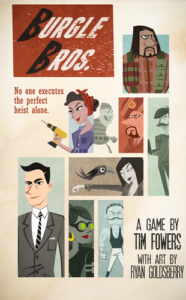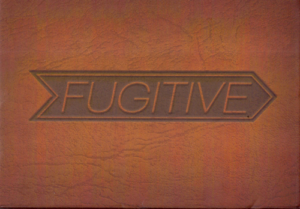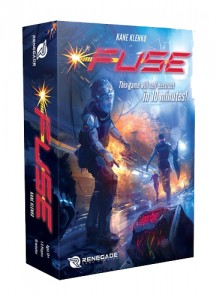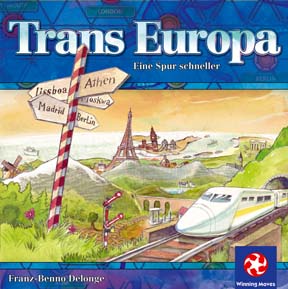- Learning time
- 20 minutes
- First play time
- 40 minutes
Now Boarding
Designed by: Tim Fowers
In Now Boarding the players are traffic controllers, working together to get all the passengers to their desired destinations. The only problem is, new ones keep turning up…
The board shows a map of the USA, complete with airports and routes between them. Players have a plane each on the board, and another in front of them showing how many passengers they can carry, and how fast they can go: at the start your plane can carry just one passenger and move three spaces, but you’re allowed an upgrade before the first round – an extra seat for the second passenger, or an extra movement point.
Some passengers appear at the airports in the form of passenger cards, and the first round begins!
Actually, the first round doesn’t begin until all players are agreed, and that’s because each round only lasts 30 seconds! (even less with two or three players!) So before flipping the timer, players can discuss plans and decide what to do. However – plans may change because although you can see which airports they’re waiting at, you won’t know where they want to go until you flip the timer, and turn the passenger cards over. Then everyone springs into action, collecting passengers and – soon – delivering them too.
There are two potential hitches though. Firstly, the weather. This can sometimes be helpful (a tail-wind makes you travel faster) but sometimes not (storms slow you down). Secondly, although some routes are available to everyone, others can only used by particular players – at least at the start of the game.
What helps negotiate these hitches – and the ever-increasing volume of passengers – are upgrades for your plane. Delivered passengers turn into cash, and cash can be used to buy more seats, more speed, or even a permit to use other player’s routes. And remember, despite everyone runnig their own airline, players are working together, so the planning stage is crucial – not only can you decide who’s doing what, you can arrange to meet at an airport and swap passengers, if you have room for them.
The game proceeds through three decks of passenger cards representing morning, afternoon, and evening, with the weather changing during the day. Any passengers still in an airport at the end of each turn get a red anger cube – they’re not happy to be kept waiting. If any passenger receives their fourth anger cube, they storm out of the airport in a huff. If three passengers desert the airports in this way, the players collectively lose. Otherwise, they win by delivering the final evening passenger to their destination!
The guru's verdict
-
Take That!
Take That!
None - players work as a team!
-
Fidget Factor!
Fidget Factor!
None to speak of.
-
Brain Burn!
Brain Burn!
The rules are light, but the challenge is implementing them in the minimal window afforded you by the timer.
-
Again Again!
Again Again!
The passengers come out randomly, and so does the weather. What's always the same is the sense of tension and chaos!









Sam says
I've enjoyed every game I've played by this designer - they always have a genuine sense of fun and I love the presentation too. Now Boarding skews toward a younger audience than the brilliant Burgle Bros, but has the same sense of puzzle under a pressure - more pressure in fact, due to the timer. It's a game that thrives on the stress of a situation - as the sands of time tick away you need to move fast, and the new passengers can throw all manner of spanners in the works. That kind of tension works better for me in a short silly game like FUSE, whereas here I felt it outstayed its welcome somewhat - I needed a lie down afterwards!